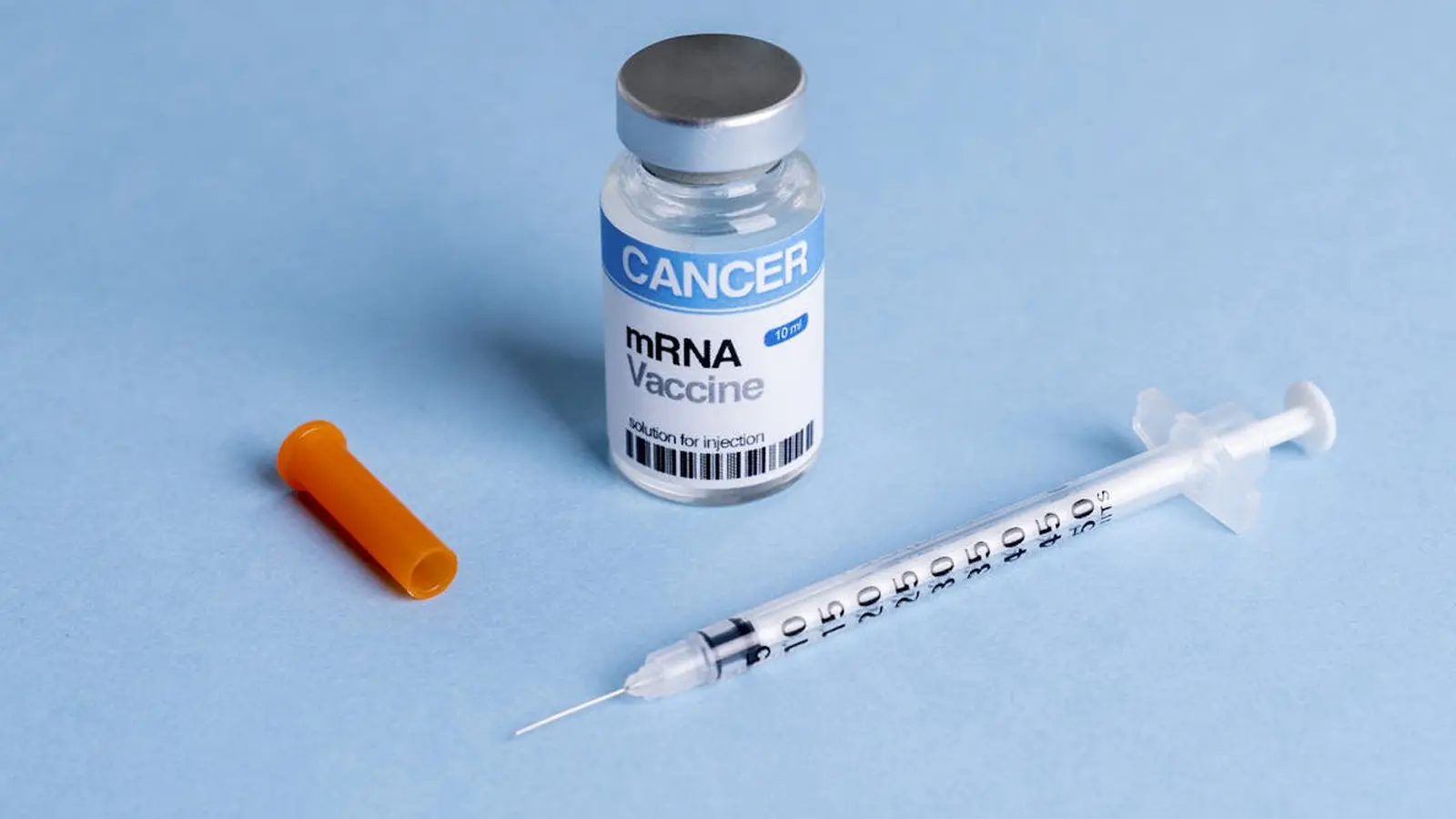6 Minutes
A new experimental mRNA vaccine has demonstrated striking antitumor effects in mouse models by broadly stimulating the immune system rather than targeting a single tumor antigen. In combination with immune checkpoint inhibitors, the vaccine converted treatment-resistant tumors into ones that shrink or disappear. In some mouse experiments a follow-up formulation even eliminated tumors as a standalone therapy. Published in Nature Biomedical Engineering and led by researchers at the University of Florida, the work suggests a possible new paradigm for cancer vaccination and advances the prospect of a broadly applicable, off-the-shelf cancer vaccine.
Key findings and scientific context
The study found that an mRNA formulation similar in platform technology to the COVID-19 vaccines can prime the immune system to respond to cancer as if it were a viral infection. Rather than encoding a tumor-specific mutated protein, the vaccine stimulates a generalized antiviral-like immune response within tumors. That response included increased expression of PD-L1 inside tumor tissue, a change that paradoxically made tumors more susceptible to PD-1/PD-L1 checkpoint blockade. When paired with PD-1 inhibitors, typically used to release brakes on antitumor T cells, the combined treatment produced strong tumor regressions in mouse models. The work was supported by federal and private funders, including the National Institutes of Health.
Lead investigator Elias Sayour, M.D., Ph.D., a pediatric oncologist at UF Health, described the result as a potential alternative route to surgery, radiation, and chemotherapy for certain treatment-resistant cancers. Co-author Duane Mitchell, M.D., Ph.D., highlighted the conceptual shift: rather than only designing vaccines to match tumor mutations or shared antigens, researchers can exploit mRNA to broadly awaken immune defenses that then recognize tumor cells.
How the generalized mRNA vaccine works
Messenger RNA, or mRNA, carries blueprints for producing proteins inside cells. Delivered via lipid nanoparticles, mRNA vaccines can instruct cells to make specific proteins or to produce signals that activate innate and adaptive immunity. In this generalized vaccine approach the mRNA does not encode a tumor-specific neoantigen. Instead it triggers a strong immunologic cascade that stimulates antigen-presenting cells and induces a local inflammatory environment inside the tumor.

Mechanism highlights
- Activation of innate antiviral pathways leads to infiltration and activation of T cells.
- Induction of PD-L1 on tumor cells or the tumor microenvironment creates a targetable state for PD-1/PD-L1 checkpoint inhibitors.
- Dormant or exhausted T cells that previously failed to attack tumor cells can be reactivated and expand into effective tumor-killing populations once the immune milieu is altered.
This mechanism suggests the vaccine acts as a wake-up signal, converting immunologically cold tumors into hot ones that respond to standard immunotherapies.
Experiment details and results
In mouse melanoma models that are typically resistant to checkpoint blockade, the research team tested combined regimens of the mRNA formulation and PD-1 inhibitors. Combination therapy produced substantial tumor shrinkage compared with either agent alone. In follow-up experiments across models of skin, bone, and brain cancer, investigators assessed a different generalized mRNA formulation as a single agent and observed complete tumor regressions in some cases.
The study builds on earlier human work from the same group in which a personalized mRNA vaccine rapidly reprogrammed the immune system of glioblastoma patients to attack their tumors. That initial trial used patient-specific tumor material to create individualized vaccines and provided proof that mRNA vaccination can drive rapid, tumor-directed immune responses in humans. The current work demonstrates that a non-personalized, generalized mRNA approach can also produce tumor-specific effects by reshaping the tumor microenvironment.
Implications for a universal cancer vaccine and next steps
Researchers describe this strategy as a potential third pathway in cancer vaccine development, distinct from both shared-antigen vaccines and fully personalized neoantigen vaccines. A generalized mRNA vaccine could be manufactured at scale, providing an off-the-shelf option that primes patients prior to or alongside checkpoint inhibitors. That could expand access and reduce cost and turnaround time compared with bespoke vaccines.
However, several translational hurdles remain. Key questions include safety and tolerability in humans, optimal dosing and formulation, duration of immune activation, and identifying which tumor types and patient subgroups are most likely to benefit. Manufacturing, quality control of lipid nanoparticle carriers, and regulatory evaluation will also shape development timelines.
The research team is refining formulations and advancing toward first-in-human studies. Investigators emphasize that combination strategies with existing immunotherapies are a high-priority path because the vaccine appears to sensitize tumors to checkpoint blockade.
Expert Insight
Dr Maya Kline, immunologist and science communicator, notes: 'This work is exciting because it leverages a flexible mRNA platform to reprogram the tumor microenvironment. If safety and efficacy translate to humans, a generalized mRNA vaccine could become a broadly deployable adjunct to current immunotherapies. But clinical trials will need to carefully monitor immune-related adverse events and define which cancers respond best.'
Related technologies and future prospects
The generalized mRNA strategy depends on advances in lipid nanoparticle delivery, mRNA stability chemistry, and an improved understanding of tumor immunobiology. These technologies are evolving rapidly after the widespread deployment of mRNA vaccines for infectious disease. Future directions include combining generalized vaccines with oncolytic viruses, adoptive cell therapies, or localized delivery techniques to increase tumor specificity while limiting systemic inflammation. Biomarker development will also be crucial to predict response and manage risk.
If human trials confirm the preclinical promise, the approach could change how clinicians prepare tumors to respond to immunotherapy, offering a scalable complement to personalized cancer vaccines and targeted therapies.
Conclusion
The University of Florida study demonstrates that a generalized mRNA vaccine can mobilize immune responses that convert resistant tumors into ones vulnerable to attack, especially when used with PD-1 checkpoint inhibitors. By stimulating antiviral-like immunity rather than encoding tumor-specific antigens, this approach opens a new avenue toward a potential universal cancer vaccine. Ongoing formulation improvements and the transition to human clinical trials will determine whether the striking results in mice can be translated into safe, effective treatments for people with difficult-to-treat cancers.
Source: scitechdaily


Leave a Comment